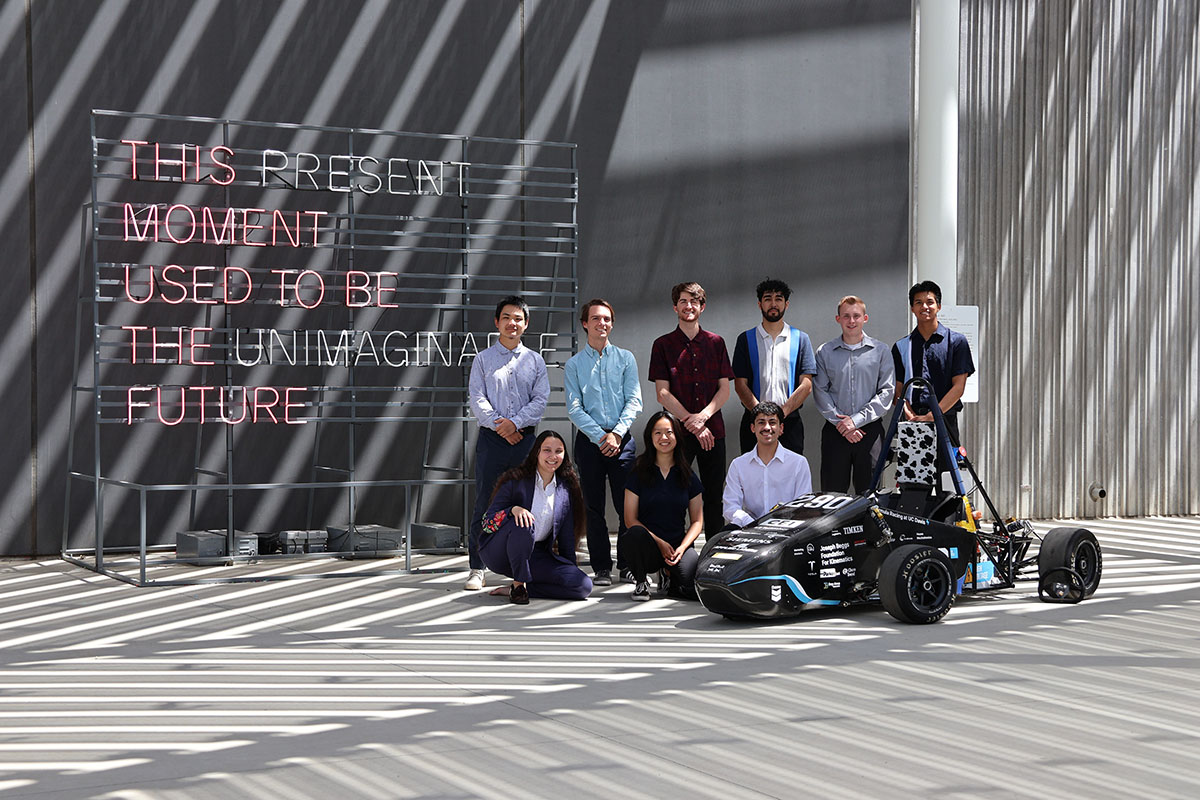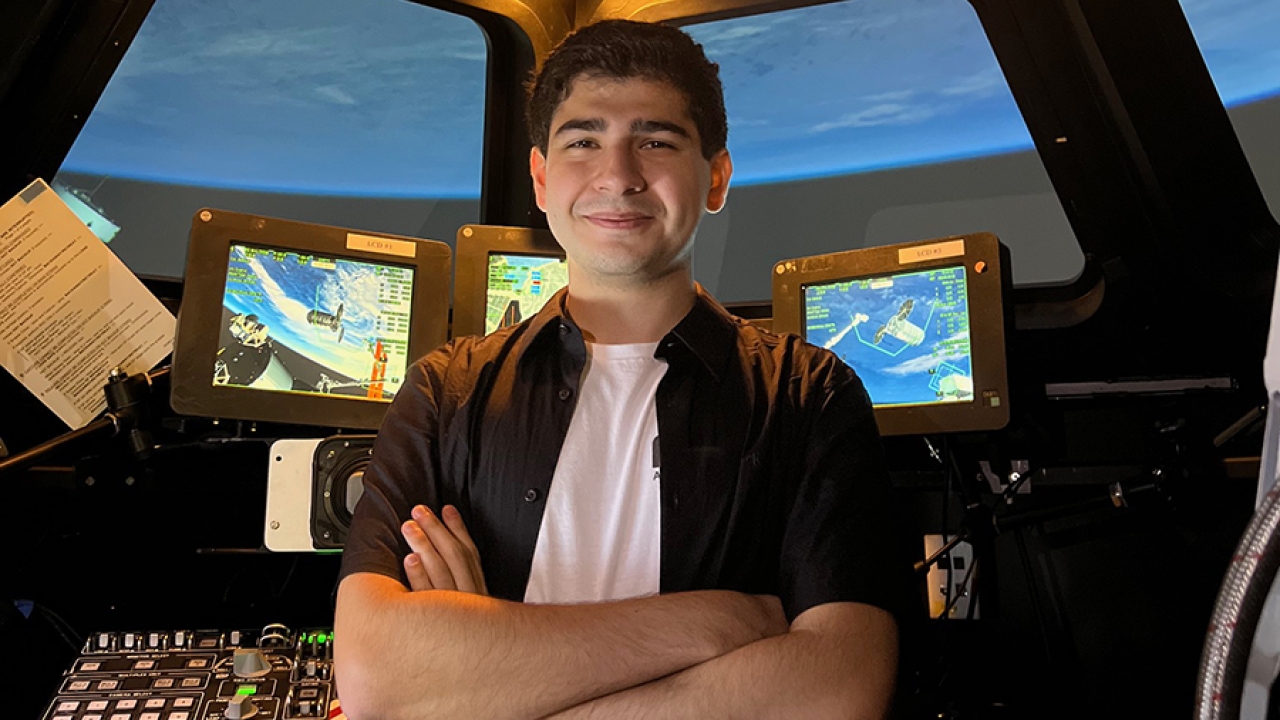
Formula Racing Gears up for a Comeback at Annual Competition
Seventy-five teams have registered for the annual international Formula Society of Automotive Engineers (SAE) Electric competition, held this year in Brooklyn, Michigan, from June 12-15. Every year, Formula Racing at the University of California, Davis, or FRUCD, designs and assembles an open-wheel, single-seat, electric racecar from scratch to compete. Since the COVID-19 pandemic, FRUCD has struggled to get ready in time for the competition, and the team has failed to pass the extensive technical inspection. This year, FRUCD feels stronger about their chances.
Adhering to the one-year cycle has always been a challenge when it comes to designing, manufacturing and assembling a racecar. Fall quarter is dedicated to designing the vehicle, winter to assembling it, and spring to testing it out.
"We've been told that historically there hasn't been a lot of time for testing for any team — they're kind of up to the wire just making the car work," shared Tristan Pham, a senior majoring in aerospace and mechanical engineering.
In recent years, FRUCD struggled to have their vehicle ready in time for the Picnic Day parade. Without their racecar ready to demonstrate, they resorted to using the vehicle manufactured for the previous year's competition.
But this year is different. For the first time since before the pandemic, FRUCD participated in the parade with the vehicle they manufactured this year, marking them ready for testing months ahead of the competition.
"It's kind of uncharted waters, because we haven't really in the past few years had a car to be testable this early," Pham explained.
In addition to the manufacturing and assembly they complete at the workshop provided at the Diane Bryant Engineering Student Design Center, FRUCD blocks out what they call "track days." On these weekends, they test drive their vehicle at the Blue Max Kart Club track, trying to catch any issues before the Formula SAE Electric competition begins on June 12.
Pham added, "We're trying to put the car through mock dynamic events and see what type of performance we get, just to gauge. And then it's kind of a shakedown to see if anything is not working on the car, so we could fix it."
There is an additional challenge the team faces even after making the 45 hour, three-day drive to Michigan. Each year, teams are given a 150-page book of requirements to adhere to. A majority of the guidelines are safety-based, which is why the inability to meet every standard has a severe consequence — they are kept from participating in any events.
Heather Lin, a second-year mechanical engineering major, shared the severity of missing even a single detail.
"There are 70-something teams, and at the end, there's only 10 or 15 that end up being able to pass the technical inspection," she said. "It's very difficult to meet all of those standards."
FRUCD prioritizes the rulebook because it's the crucial first part of the event that determines if all their work from the past year has been in vain. Should they succeed in passing the technical inspection this year, it would be the first time UC Davis has qualified since 2019 when FRUCD came in fourth place.
Even after the team has done all they can to prepare before heading to Michigan, the work continues at the event where the combined effort of fifty club members comes down to the members able to accompany the racecar to the four-day event — in previous years, a mere dozen.
Conor Stoneman, a senior majoring in mechanical engineering, recalled his experience attending the event last year.
"I remember a couple of nights I got 45 minutes of sleep," he shared. "You're always working on the car. You're either fixing problems, or something broke and needs to be replaced."
With the morale boosts of seeing the car run at the track, no one wants to miss out when their success seems so assured. As many as 28 club members plan on accompanying the car to the competition this year.

Despite the dates of the competition lining up with commencement, even graduating members of FRUCD are attending with plans to quickly fly back in time for their ceremony. For some students, like Pham, it's just one stop on the road before the next, as his internship in Los Angeles begins the following Monday, on June 17.
"It's super tiring, but totally worth it," Lin said. "At the end there's a race and it's super cool being able to see our team get to where they are and also see other teams as well."
Connecting with other engineers interested in vehicles like racecars is just one of the perks of attending the event. Students also have the opportunity to meet with recruiters present at the competition. It's no surprise that members of FRUCD are often recognized in the automotive industry for their hands-on engineering in manufacturing a racecar.
"I had a recruiter come up to me who was like, 'I only hire students that have gone through the Formula SAE Electric challenge,'" Lin shared.
While there are major career benefits to being part of FRUCD — Stoneman had an internship at Tesla this past summer based on his experience with FRUCD — it's the process of manufacturing a racecar; of seeing it from its early design stages to its finalized testing and racing stages; that compels students to sink their time and effort into the project.
"It's applying what we've learned in class to actually coming up with our own unique design that we then go ahead and go through the whole process of manufacturing and assembling as well," Stoneman explained.
Pham added, "That's why this is such a great club to get into in undergrad, because you just get to see the whole process and do it yourself."




